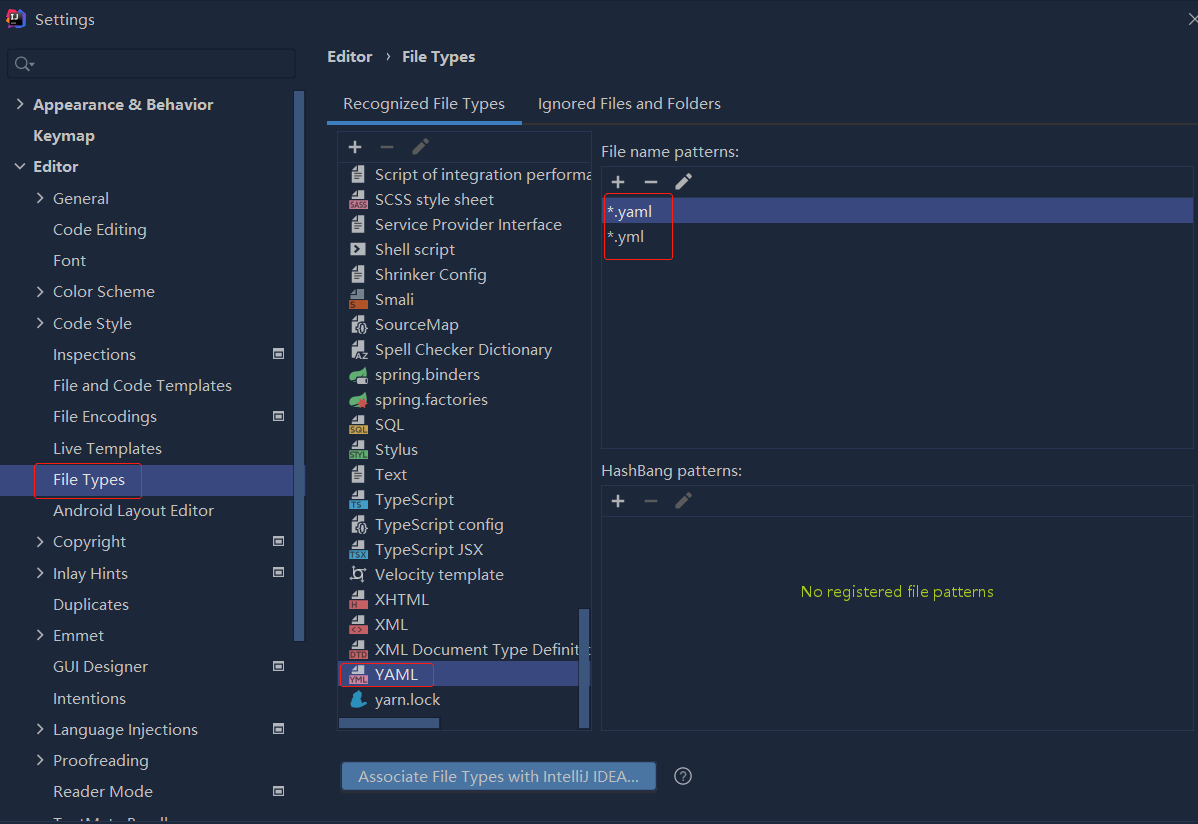问题描述
我是第一次学习Symfony。
Form Validation不能按预期工作,按照Symfony文档,我确实留下了样板代码,我阅读了10次其他堆栈溢出文章和文档,以查看是否错过了某些内容,但我无法弄清楚出来。
客户端验证已关闭,基本上可以正常测试服务器端验证。 但是,提交表单后,即使表单为空且数据无效,isValid()方法也将返回true。我在Entity和formType中都添加了约束,但是它绕过了一切,我知道这是事实,因为异常是由数据库或密码编码方法抛出的。
我下面有一个简单的代码示例,请检查:
ps:这是一个用于学习的虚拟项目, 这是代码:
//App\Entity\MyFavorite.php
//App\Controller\RegistrationController:
<?php
namespace App\Controller;
use App\Entity\MyFavorite;
use App\Form\RegistrationFormType;
use Symfony\Bundle\FrameworkBundle\Controller\AbstractController;
use Symfony\Component\HttpFoundation\Request;
use Symfony\Component\HttpFoundation\Response;
use Symfony\Component\Routing\Annotation\Route;
use Symfony\Component\Security\Core\
Encoder\UserPasswordEncoderInterface;
use Symfony\Component\Validator\Validator\ValidatorInterface;
class RegistrationController extends AbstractController
{
/**
* @Route("/register",name="app_register")
*/
public function register(
Request $request,UserPasswordEncoderInterface $passwordEncoder,ValidatorInterface $validator): Response
{
$user = new MyFavorite();
$form = $this->createForm(
RegistrationFormType::class,$user
);
$form->handleRequest($request);
if ($form->isSubmitted() && $form->isValid()) {
// encode the plain password
$user->setPassword(
$passwordEncoder->encodePassword(
$user,$form->get('plainPassword')->getData()
)
);
$entityManager = $this->getDoctrine()->getManager();
$entityManager->persist($user);
$entityManager->flush();
// do anything else you need here,like send an email
return $this->redirectToRoute('myfav_vault');
}
return $this->render('registration/register.html.twig',[
'registrationForm' => $form->createView()
]);
}
}
//App\Entity\MyFavorite
<?php
namespace App\Entity;
use App\Repository\MyFavoriteRepository;
use Doctrine\ORM\Mapping as ORM;
use Symfony\Bridge\Doctrine\Validator\Constraints\UniqueEntity;
use Symfony\Component\Security\Core\User\UserInterface;
//-> Bringing in the Validator Constraints as Assert
use Symfony\Component\Validator\Constraints as Assert;
/**
* @ORM\Entity(repositoryClass=MyFavoriteRepository::class)
* @UniqueEntity(fields={"uniqueCode"},message="There is already an account with this uniqueCode")
*/
class MyFavorite implements UserInterface
{
/**
* @ORM\Id()
* @ORM\GeneratedValue()
* @ORM\Column(type="integer")
*/
private $id;
/**
* @ORM\Column(type="string",length=11,unique=true)
* -> Adding my first custom assertion:
* @Assert\Regex("/^[a-zA-Z0-9]{3}-[a-zA-Z0-9]{3}-[a-zA-Z0-9]. {3}$/")
* @Assert\Length(
* min = 11,* max = 11
* )
*/
private $uniqueCode;
/**
* @ORM\Column(type="json")
*/
private $roles = [];
/**
* @var string The hashed password
* @ORM\Column(type="string")
*/
private $password;
/**
* @ORM\Column(type="string",length=100)
* @Assert\NotBlank
*/
private $name;
public function getId(): ?int
{
return $this->id;
}
public function getUniqueCode(): ?string
{
return $this->uniqueCode;
}
public function setUniqueCode(string $uniqueCode): self
{
$this->uniqueCode = $uniqueCode;
return $this;
}
/**
* A visual identifier that represents this user.
*
* @see UserInterface
*/
public function getUsername(): string
{
return (string) $this->uniqueCode;
}
/**
* @see UserInterface
*/
public function getRoles(): array
{
$roles = $this->roles;
// guarantee every user at least has ROLE_USER
$roles[] = 'ROLE_USER';
return array_unique($roles);
}
public function setRoles(array $roles): self
{
$this->roles = $roles;
return $this;
}
/**
* @see UserInterface
*/
public function getPassword(): string
{
return (string) $this->password;
}
public function setPassword(string $password): self
{
$this->password = $password;
return $this;
}
/**
* @see UserInterface
*/
public function getSalt()
{
//not needed when using the "bcrypt" algorithm insecurity.yaml
}
/**
* @see UserInterface
*/
public function eraseCredentials()
{
// If you store any temporary,sensitive data on the user,// $this->plainPassword = null;
}
public function getName(): ?string
{
return $this->name;
}
public function setName(string $name): self
{
$this->name = $name;
return $this;
}
public function getExpiry(): ?\DateTimeInterface
{
return $this->expiry;
}
public function setExpiry(?\DateTimeInterface $expiry): self
{
$this->expiry = $expiry;
return $this;
}
}
//App\Form\RegistrationFormType
<?php
namespace App\Form;
use App\Entity\MyFavorite;
use Symfony\Component\Form\AbstractType;
use Symfony\Component\Form\Extension\Core\Type\CheckboxType;
use Symfony\Component\Form\Extension\Core\Type\PasswordType;
//-> Getting basic TextType
use Symfony\Component\Form\Extension\Core\Type\TextType;
use Symfony\Component\Form\FormBuilderInterface;
use Symfony\Component\OptionsResolver\OptionsResolver;
use Symfony\Component\Validator\Constraints\IsTrue;
use Symfony\Component\Validator\Constraints\Length;
use Symfony\Component\Validator\Constraints\NotBlank;
use Symfony\Component\Validator\Constraints\Regex;
//-> Testing out with Regex and String
class RegistrationFormType extends AbstractType
{
public function buildForm(FormBuilderInterface $builder,array $options)
{
$builder
->add('name')
->add('uniqueCode')
->add('plainPassword',PasswordType::class,[
// instead of being set onto the object directly,// this is read and encoded in the controller
'mapped' => false,'constraints' => [
new NotBlank([
'message' => 'Please enter a password',]),//-> I am removing this as I do not want to provide options for min/max length
/*new Length([
'min' => 6,'minMessage' => 'Your password should be at least {{ limit }} characters',// max length allowed by Symfony for security reasons
'max' => 4096,*/
],])
;
}
public function configureOptions(OptionsResolver $resolver)
{
$resolver->setDefaults([
'data_class' => MyFavorite::class,//->Im going to turn of form validation on the client to see if the validation works on the server:
'validation_groups' => false
]);
}
}
//register.html.twig:
{% extends 'base.html.twig' %}
{% block title %}Register{% endblock %}
{% block body %}
{% for flashError in app.flashes('verify_email_error') %}
<div class="alert alert-danger" role="alert">{{ flashError }}</div>
{% endfor %}
<h1>Register</h1>
{{ form_start(registrationForm,{'attr': {'novalidate':'novalidate'}}) }}
{# This line had to be added manually so the form comes at the right place,some how all fields were not included #}
{{ form_row(registrationForm.name) }}
{{ form_row(registrationForm.uniqueCode) }}
{{ form_row(registrationForm.plainPassword,{
label: 'Password'
}) }}
<button type="submit" class="btn">Register</button>
{{ form_end(registrationForm) }}
{% endblock %}
发现:
提交完全空白的表格时: 当password字段为null且需要字符串时,encodePassword()会引发异常,(它甚至不应进入此阶段,因为我以为isValid()应该返回false?)
使用密码和所有其他密码作为空值提交: 绕过所有内容,只有数据库抛出异常。
为uniqueCode提交了错误的模式:验证器甚至无法识别任何东西,并且每次都会通过
handleRequest()方法不会引发任何异常或返回false,但密码除外,在密码中我遇到一个非常丑陋的错误,说密码的参数2不能为null, 因此很明显,验证没有发生,isValid()返回true。
错误异常来自数据库,
当我尝试以错误的模式插入唯一代码时,它不会被插入, 名称为空时,它将通过验证,但数据库会引发异常, 当密码字段为空时,它仍会通过验证,
Symfony文档说:
handleRequest()方法将数据写回到同一对象,
然后我们验证数据:
“在上一节中,您学习了如何使用有效或无效数据提交表单。在Symfony中,问题不是“表单”是否有效,而是基本对象($ task在此示例)在表单将提交的数据应用于表单之后才有效。调用$ form-> isValid()是询问$ task对象是否具有有效数据的快捷方式。“
我试图查看ValidatorInterface文档,但其中明确指出: “大多数时候,您不会直接与验证程序服务进行交互,也不必担心打印出错误。大多数时候,您将在处理提交的表单数据时间接使用验证。有关更多信息,请参见如何验证Symfony表单。”
我在这里想念什么?
解决方法
这不是Stackoverflow的正确格式,但是我们可以看到关闭之前可以走多远。可能需要在Reddit Symfony论坛上继续。
通过以下操作开始,从小做起。请注意,没有实体或其他东西在进行。只是想让自己相信验证的基础确实有效:
class RegistrationController extends AbstractController
{
public function register(Request $request)
{
$form = $this->createFormBuilder()
->add('username',TextType::class,[
'constraints' => new NotBlank(['message' => 'User name cannot be blank'])
])
->add('save',SubmitType::class,['label' => 'Register'])
->getForm();
$form->handleRequest($request);
if ($form->isSubmitted() && $form->isValid()) {
dump('Validated');
}
return $this->render('user/register.html.twig',['form' => $form->createView()]);
}
}
# user/register.html.twig
{% extends 'base.html.twig' %}
{% block body %}
<h1>Register Form</h1>
{{ form_start(form,{'attr':{'novalidate':'novalidate'}}) }}
{{ form_end(form) }}
{% endblock %}

 依赖报错 idea导入项目后依赖报错,解决方案:https://blog....
依赖报错 idea导入项目后依赖报错,解决方案:https://blog....
 错误1:gradle项目控制台输出为乱码 # 解决方案:https://bl...
错误1:gradle项目控制台输出为乱码 # 解决方案:https://bl...